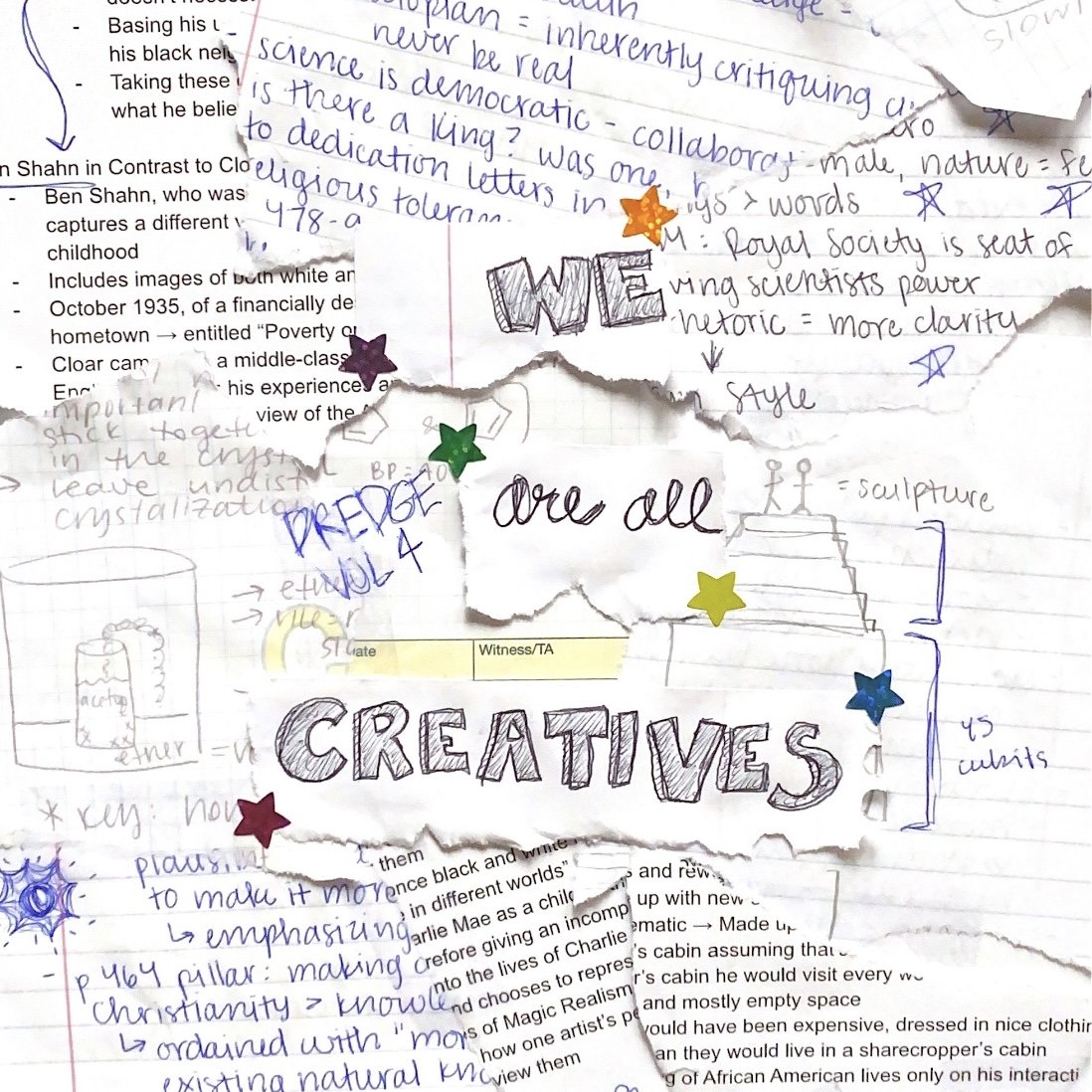By Izzy Brewer
For a student in any discipline, writing notes is nothing short of an instinct. Whether it is the definition of a new rhetorical technique, a physics formula, or a so-simply-geometric-yet-never-perfect diagram of a chemical structure, what needs to be remembered for the final exam winds up on a line in a notebook one way or another. It isn’t an obvious connection, but this is art. When thinking about the intersection of academia and art, our first thought would be of the art students we watch through the window as they create their drawings, paintings, and sculptures in the studio instead of a lecture hall. We all secretly envy them – of course they are the creatives of campus with all the freedom of thought and expression, and the rest of us are left with never-ending lectures of too much information dumped into our laps and transcribed onto paper.
But what if we are all these artists at heart? I argue that regardless of discipline, any method of recording our thoughts onto paper by hand or screen via keyboard is a form of art in itself. The learning process requires a level of agency in our education, as we decide how to translate the lecturer’s words into our own to then write down and perhaps reformat later. We may write drafts and reword notes as if they are the first version of our piece, and then save them as a finished product fit for studying. We each handle that process in our way, and our notes end up looking completely different from the students’ sitting next to us. At its most basic level, we are “creating” something, and just because its content is not abstract or even extra colorful doesn’t diminish its value as a piece of art that makes our thoughts tangible and shareable.
Though seemingly contradictory to my last point, our writing, whether physical or digital, is partially subconscious. When frantically trying to keep up with the professor’s lecture, we write or type automatically with little thought as to what it looks like or how its organized. Abstract Expressionist Jackson Pollock, active through the 1930s to the 50s, claimed that his painting technique was completely controlled by the ideas that arose from the deepest unconscious layer of his mind, inspired by the theories of psychiatrist Carl Jung. He splattered, dripped, poured, and flung in his signature style known as “action painting,” which emphasized the flow of creative energy from the brain to the hand and ultimately to the canvas. The art we create through our notes results from a combination of our conscious and unconscious choices, just as the loops and dots and crosses in our handwriting developed over our lifetimes are purely second nature rather than a specific compositional decision.
Each member of the Dredge team embraced this idea of handicraft and its individual expression to bring you Dredge Volume 4, now available on the website and in print. Along with the featured music, art, and poetry, our handwriting and mindless doodles grace the pages as a physical record of our part in its creation preserved in the digital realm. Vol. 4 is unique in that it transports Dredge back to the do-it-yourself roots of zine culture. The concept of a small-scale magazine emerged in the 1930s and 40s with hand-illustrated science fiction comics, and the punk subculture of the 70s brought zines to the forefront of regional music journalism as an accessible means of exploring local bands and genres. We bring Dredge to you for the same purpose – to present Memphis art and music directly to the public and bring visibility to the city we love so much.
The next time you find yourself daydreaming in class and drawing in the paper margins, I hope you remember that you are creating art (and maybe think of Dredge too, we would appreciate it). The only requirement for being a “creative” is to be a human who is creative, and expressing yourself through your writing and doodling in your notes is being just that.

